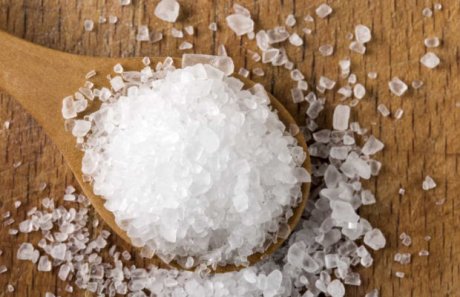The 6 Most Used Spices in Portuguese Cuisine
These spices and herbs, present at every Portuguese kitchen are also a testimony to Portuguese history and culture, as they were many times the drive of the country expansion and discoveries throughout the centuries. So learn which seasonings are most used in Portuguese cuisine:
Salt (“Sal”)
Salt has been present on Portuguese territory since the roman occupancy of the Iberian Peninsula, having five big centers for salt production called “Salgados” (a group of salt fields “Salinas”) on Aveiro, Figueira da Foz, Tejo, Sado and Algarve. The techniques used to produce the salt are still very traditional and a part of the salt exploration in Portugal. Labor intensive and passed through generations, this trade is a secular one. Essential to any Portuguese dish, salt is a natural flavor enhancer and the most used seasoning in Portuguese food.
Black pepper (“Pimenta preta”)
Black pepper was one of the earliest commodities to be traded in the world. It is impossible to talk about black pepper without talking about the historical turn of events around trade, the spice routes that were established as a result of the trade and the beginning of what we call globalization today. Biting, hot, piney, pungent, woody and sharp are all words used to describe the taste of black pepper. Originally from India, this spice together with salt is quintessential to most Portuguese savory dishes.
Cumin (“Cominho”)
Cumin has been used as spice since ancient Egypt, the Greeks and Romans also used cumin for medicinal purposes. Originally from Iran and the Mediterranean, cumin is a small seed of the parsley family with a distinct flavor and a spicy, warm aroma. Introduced in the Americas by Portuguese and the Spanish, its commonly used today in curries, Mexican and middle east food, and in Portugal its a essential component of several pork dishes and Portuguese traditional sausages.
Red bell pepper powder (“Colorau” or “Pimentão doce”)
Originally from Southern Mexico and Central America, Bell pepper (fruit used to produce paprika) was introduced in Europe and other continents during the Age of discovery. Largely used throughout the world, paprika (sweet, smoked and hot), is used in Portugal mainly to season stews and meat dishes.
Cinnamon (“Canela”)
Cinnamon has been in use by humans for thousands of years—as early as 2,000 B.C. Egyptians employed it, as well as the related spice cassia, as a perfuming agent during the embalming process, and it was even mentioned in the Old Testament as an ingredient in anointing oil. Arab traders transported this valuable spice to Europe through land routes, were it became one of the most sought after and expensive spice of all time. It was so valuable that every European court tried to gain access to it through maritime discoveries. Columbus, Pizarro tried, but it was Portugal that would eventually succeed on discovering cinnamon plantations on Ceylon (now a days Sri Lanka). This spice quickly was integrated into the Portuguese gastronomy, being a favorite specially for sweet dishes and desserts.
Bay leaves (“Louro”)
Bay leaves are widely used in Mediterranean cuisine, but date back to ancient Greece, where they were used to crown the champions of the Olympic Games. Used after drying, they release all of their oils when they are crushed or cooked, the reason why they work so well in sauces. They do not serve to add a new flavor to the dish, but rather to enhance the flavors of the other ingredients, giving many of the Portuguese dishes their richness of flavors. Just do not eat the leaves, so be sure to remove them before serving.
You might also like:
Comments




